2021年中信银行秋季招聘试卷
题目总数:122
总分数:122
时间:不限时
第 1 题
单选题
垄断厂商面临的需求曲线是( )。
A.
向下倾斜的
B.
向上倾斜的
C.
垂直的
D.
水平的
第 2 题
单选题
下列哪一项不是转移支付( )。
A.
退伍军人的津贴
B.
失业救济金
C.
贫困家庭补贴
D.
以上均不是
第 3 题
单选题
经济中存在失业时,应采取的财政政策工具是( )。
A.
增加政府支出
B.
提高个人所得税
C.
提高公司所得税
D.
增加货币发行量
第 4 题
单选题
无差异曲线为斜率不变的直线时,表示相结合的两种商品是( )。
A.
可以替代的
B.
完全替代的
C.
互补的
D.
互不相关的
第 5 题
单选题
消费函数的斜率取决于( )。
A.
边际消费倾向
B.
与可支配收入无关的消费的总量
C.
平均消费倾向
D.
由于收入变化而引起的投资总量
第 6 题
单选题
生产要素的需求曲线之所以向右下方倾斜,是因为( )。
A.
要素的边际收益产品递减
B.
要素生产的产品的边际效用递减
C.
要素参加生产的规模报酬递减
D.
以上均不正确
第 7 题
单选题
消费者剩余是消费者的( )。
A.
实际所得
B.
主观感受
C.
没有购买的部分
D.
消费剩余部分
第 8 题
单选题
蛛网模型以下列哪个假定为前提条件( )。
A.
需求量对价格缺乏弹性
B.
供给量对价格缺乏弹性
C.
消费者改变对未来的价格预期
D.
生产者按本期的价格决定下期的产量
第 9 题
单选题
假定商品M和商品N的需求交叉弹性是-2,则( )。
A.
M和N是互补品
B.
M和N是替代品
C.
M和N是正常商品
D.
M和N是劣质品
第 10 题
单选题
某商家以最小成本提供既定产量时,那么他( )。
A.
总收益为零
B.
一定获得最大利润
C.
一定未获得最大利润
D.
无法确定是否获得最大利润
第 11 题
单选题
预算线绕着它与横轴的交点逆时针转动是因为( )。
A.
商品X的价格上升
B.
商品Y的价格上升
C.
消费者收入下降
D.
商品X的价格不变,商品Y的价格上升
第 12 题
单选题
在短期,完全垄断厂商( )。
A.
收支相抵
B.
收取最大利润
C.
发生亏损
D.
上述情况都可能发生
第 13 题
单选题
假定需求曲线均为直线,那么收敛型蛛网的条件是( )。
A.
需求弹性大于供给弹性
B.
需求弹性小于供给弹性
C.
需求弹性等于供给弹性
D.
以上均不正确
第 14 题
单选题
劣质品需求的收入弹性为( )。
A.
正
B.
负
C.
零
D.
难以确定
第 15 题
单选题
对完全垄断厂商来说( )。
A.
提高价格一定能够增加收益
B.
降低价格一定会减少收益
C.
提高价格未必能增加收益,降低价格未必减少收益
D.
以上都不对
第 16 题
单选题
商品价格下降对其互补品的影响是( )。
A.
互补品的需求曲线向左移动
B.
互补品的需求曲线向右移动
C.
互补品的价格上升
D.
互补品的供给曲线向右移动
第 17 题
单选题
在通货膨胀不能完全预期的情况下,通货膨胀将有利于( )。
A.
债务人
B.
债权人
C.
在职人员
D.
离退休人员
第 18 题
单选题
引起周期性失业的原因是( )。
A.
工资刚性
B.
总需求不足
C.
经济中劳动力的正常流动
D.
经济结构的调整
第 19 题
单选题
作为经济财富的一种测定,GDP的基本缺点是( )。
A.
它测定的是一国国民生产的全部产品的市场价值
B.
它不能测定私人产出产量
C.
它所用的社会成本太多
D.
它不能测定与存货增加相联系的生产
第 20 题
单选题
自动稳定器的功能( )。
A.
旨在缓解周期性的波动
B.
旨在稳定收入,刺激价格波动
C.
旨在保持经济的充分稳定
D.
推迟经济的衰退
第 21 题
单选题
如果人们预期利率上升,则( )。
A.
卖出债券、多存货币
B.
少存货币、多买债券
C.
多买债券、少存货币
D.
少买债券、少存货币
第 22 题
单选题
信用卡按是否向发卡银行缴存备用金可分为( )两类。
A.
人民币卡、外币卡
B.
磁条卡、芯片卡
C.
贷记卡、准贷记卡
D.
单位卡、个人卡
第 23 题
单选题
下列投资品种中,风险最高的是( )。
A.
国债
B.
企业债
C.
股票
D.
期货
第 24 题
单选题
印制和发行人民币的银行是( )。
A.
中国银行
B.
中国人民银行
C.
中国工商银行
D.
中国建设银行
第 25 题
单选题
以下机构不属于我国成立的金融资产管理公司的是( )。
A.
东方
B.
信达
C.
华融
D.
光大
第 26 题
单选题
目前世界上唯一的大型跨国中央银行是( )。
A.
世界银行
B.
欧洲中央银行
C.
花旗银行
D.
亚洲开发银行
第 27 题
单选题
目前我国有四家期货交易所,其中哪一家主要是推动金融衍生产品的开发和交易( )。
A.
上海期货交易所
B.
郑州商品交易所
C.
大连商品交易所
D.
中国金融期货交易所
第 28 题
单选题
保险公司的资金不能投资于( )。
A.
银行存款
B.
买卖政府债券
C.
设立证券经营机构
D.
投资基金
第 29 题
单选题
以下哪种债券利率一般会作为整个金融市场利率体系的基准利率( )。
A.
企业债券
B.
公司债券
C.
金融债券
D.
国债
第 30 题
单选题
下列哪种指数属于香港股票市场价格指数?( )
A.
道琼斯工业指数
B.
标准普尔股价指数
C.
日经指数
D.
恒生指数
第 31 题
单选题
下列货币中尚不属于可自由兑换货币的是( )。
A.
人民币
B.
美元
C.
英镑
D.
日元
第 32 题
单选题
下列哪一项不属于债券的基本特点?( )
A.
偿还性
B.
风险性
C.
收益性
D.
流动性
第 33 题
单选题
被喻为社会经济“急救箱”,对社会起保障作用的金融体系是( )。
A.
银行体系
B.
证券市场
C.
保险体系
D.
金融衍生品市场
第 34 题
单选题
我国的中央银行是( )。
A.
中国银行
B.
中国人民银行
C.
中国工商银行
D.
中国建设银行
第 35 题
单选题
根据2003年修订后的《中国人民银行法》,中国人民银行主要负责( )。
A.
实施货币政策、维护金融稳定、提供金融服务
B.
实施货币政策、维护金融稳定、监管金融机构
C.
实施货币政策、提供金融服务、监管金融机构
D.
维护金融稳定、提供金融服务、监管金融机构
第 36 题
单选题
下列不属于财产保险的是( )。
A.
团体火灾保险
B.
机动车辆保险
C.
建筑工程保险
D.
健康保险
第 37 题
单选题
在我国代为存管股票的机构是( )。
A.
证券公司
B.
证券交易所
C.
证券登记结算机构
D.
商业银行
第 38 题
单选题
理财应具备几项基本原则,以下不正确的是( )。
A.
高收益,低风险
B.
量入为出,量力而行
C.
做足功课,不盲目投资
D.
控制欲望,不可贪婪
第 39 题
单选题
以下货币政策工具中,最灵活的是( )。
A.
存款准备金政策
B.
再贴现政策
C.
消费者信用控制
D.
公开市场业务
第 40 题
单选题
利息与活期储蓄相比有一定优越性,但可以随时支取的人民币储蓄存款是( )。
A.
定期储蓄
B.
定活两便储蓄
C.
零存整取储蓄
D.
教育储蓄
第 41 题
单选题
下列中央银行货币政策工具中不属于传统的“三大法宝”的是( )。
A.
公开市场操作
B.
再贴现政策
C.
法存款准备金率
D.
窗口指导
第 42 题
单选题
下列投资渠道中,流动性最强的是( )。
A.
集合理财产品
B.
证券投资
C.
活期储蓄
D.
不动产投资
第 43 题
单选题
以标准普尔公司的债券信用评级为例,以下信用等级最高的评价是( )。
A.
A
B.
AA
C.
BB
D.
CC
第 44 题
单选题
使国内银行卡可以实现跨行通用的金融服务机构是( )。
A.
中国人民银行
B.
中国银监会
C.
中国银行
D.
中国银联
第 45 题
单选题
上市公司发放股利时,只有下列哪一天持有公司股票的股东有权获得股利( )。
A.
股利宣告日
B.
股权登记日
C.
除息日
D.
除权日
第 46 题
单选题
以下关于封闭式基金的说法中不正确的是( )。
A.
封闭式基金的规模和存续期是既定的
B.
投资者在基金存续期内不能向基金公司赎回资金
C.
投资者可以在耳机市场上转让基金单位
D.
基金转让价格一定等于基金单位净值
第 47 题
单选题
我国金融市场体系主要包括( )。
A.
货币市场、资本市场、外汇市场、黄金市场
B.
资本市场、外汇市场、黄金市场
C.
货币市场、外汇市场、黄金市场
D.
货币市场、资本市场、黄金市场
第 48 题
单选题
关于个人信用报告的说法不正确的是( )。
A.
每个人都能查询自己的信用报告
B.
经过被查询人书面授权他人才能查询信用报告
C.
商业银行无需被查询人授权就可以查询信用报告
D.
信用报告中实时记录“何时、何人、因何原因”查询过
第 49 题
单选题
以人的寿命和身体为保险标的保险是( )。
A.
商业保险
B.
社会保险
C.
财产保险
D.
人身保险
第 50 题
单选题
以下不属于“黑钱”来源的是( )。
A.
毒品交易所得
B.
敲诈勒索所得
C.
走私收入
D.
诚实守法经营所得
第 51 题
单选题
公司采用固定或稳定增长的股利政策发放股利的好处主要表现为( )。
A.
提高支付能力
B.
降低资本成本
C.
实现资本保全
D.
维持股价稳定
第 52 题
单选题
下列事项中,会导致公司资本成本降低的是( )。
A.
企业经营风险高,财务风险大
B.
通货膨胀率提高
C.
企业一次性需求筹集的资金规模大,占用资金时限长
D.
公司股票上市交易,改善了股票的市场流动性
第 53 题
单选题
下列属于非系统性风险的是( )。
A.
再投资风险
B.
变现风险
C.
价格风险
D.
购买力风险
第 54 题
单选题
“账存实存对比表”是财产清查的( )。
A.
原始凭证
B.
记账凭证
C.
账薄
D.
汇总记账凭证
第 55 题
单选题
下列不属于预计利润表编制依据的是( )。
A.
现金预算
B.
销售预算
C.
预计资产负债表
D.
专门决策预算
第 56 题
单选题
下列属于我国法律渊源的是:
A.
民法
B.
宪法
C.
刑法
D.
行政法
第 57 题
单选题
根据《中华人民共和国宪法》规定,下列选项中应由全国人民代表大会行使的职权有:
A.
监督宪法的实施,决定国家重大问题
B.
制定和修改基本法律
C.
选举、决定和罢免有关国家机关的重要领导人
D.
以上都是
第 58 题
单选题
按照《中华人民共和国银行业监督管理法》的规定,对发生风险的银行业金融机构进行处置的方式不包括:
A.
接管
B.
出售
C.
撤销
D.
重组
第 59 题
单选题
金融机构办理业务时发现客户单笔交易超过规定金额的,应当及时向________报告。
A.
当地公安部门
B.
当地反洗钱中心
C.
当地法院
D.
当地检查机关
第 60 题
单选题
以下符合“守法合规”要求的做法是:
A.
遵守所在机构的规章制度
B.
遵守法律法规
C.
遵守行业自律准则
D.
上述都应遵守是
第 61 题
单选题
以下关于远期合同和期货合同的说法错误的是( )。
A.
远期合同不在规范的交易所内交易,具有较大的灵活性
B.
远期合同因为受到的限制较少,流动性较期货合同好
C.
大多数期货合同是抵消结算,少数是交付结算
D.
与远期合同相比,期货合同一般情况下都是标准化的
第 62 题
单选题
绩效评估的作用不包括:
A.
为组织发展提供支持
B.
为决策提供依据
C.
检验企业或员工是否具有强烈的竞争意识
D.
为员工潜能评估或人事调整提供依据
第 63 题
单选题
下列属于职权范围的是:
A.
榜样的影响力
B.
老师傅的威望
C.
总经理秘书对决策的影响作用
D.
年末对下属进行的绩效考评
第 64 题
单选题
服装制造厂收购或兼并纺织厂是实施( )战略的表现。
A.
后向一体化
B.
横向一体化
C.
前向一体化
D.
横向多角化
第 65 题
单选题
Only when humanity began to get its food in a more ______ way was there time for other things, like sports games and entertainment activities.
A.
predictive
B.
provocative
C.
protective
D.
productive
第 66 题
单选题
A fruitarian diet, which consists solely of fruit, is ______ protein, salt, and many micronutrients and is not recommended.
A.
adequate for
B.
intent on
C.
short of
D.
deficient in
第 67 题
单选题
Food seems to have been ______ in the local markets, even if the quality is left much to be desired.
A.
available
B.
avoidable
C.
adorable
D.
advisable
第 68 题
单选题
So, if it is sunny day, most of people prefer to do some outdoor activities and enjoy the warm sunshine, ______ stay at home.
A.
or rather
B.
rather than
C.
but rather
D.
other than
第 69 题
单选题
The two bodies are so far apart that the attractive force between them is ______.
A.
flexible
B.
notable
C.
negligible
D.
negotiable
第 70 题
单选题
China is ready to ______ new areas and new ways of expanding bilateral trade and promote sustained and stable growth of the trade.
A.
raise
B.
duplicate
C.
heighten
D.
explore
第 71 题
单选题
The work at the weather observation stations goes on regularly without any ______, in spite of any weather conditions.
A.
interpretation
B.
interruption
C.
intonation
D.
insertion
第 72 题
单选题
By 1860 the United States produced more than ______ as in 1775, though a good half of it was now consumed domestically.
A.
twice as much tobacco
B.
twice tobacco as much twice
C.
twice tobacco as much
D.
tobacco as twice much
第 73 题
单选题
Throughout the history of movie making, Shakespeare’s plays have been ______ for film more than the works of any other author all over the world.
A.
adapted
B.
accepted
C.
received
D.
adopted
第 74 题
单选题
Elvis Presley, one of the greatest singers in America, won many awards from nations all over the world, yet he did not record in any language ______ English.
A.
rather than
B.
other than
C.
less than
D.
any other
第 75 题
单选题
On an annual ______, house prices in Scotland are now only 1% lower than they were a year ago, but they are 8% down in Northern Ireland.
A.
plan
B.
object
C.
found
D.
basis
第 76 题
单选题
In the heart of Patagonia area, glaciers rise in the midst of mountain capes and alpine meadows, close enough to hike right up to and ______.
A.
touched
B.
touch
C.
touching
D.
being touched
第 77 题
单选题
Science and spirit seemed so incongruent, and yet they both appeared to be two windows ______ into the same house.
A.
looked
B.
looks
C.
looking
D.
to look
第 78 题
单选题
He felt so cold that he kept trembling ______ unable to endure it any more.
A.
as for
B.
as well
C.
as if
D.
as long as
第 79 题
单选题
Mankind must have laws and ______ to them or their life would be as bad as that of the most savage beast in the jungle.
A.
confine
B.
confirm
C.
conform
D.
confront
第 80 题
单选题
Special needs students can not only learn from regular education teachers, but can participate in collaborative learning with mainstream students as well. Collaborative learning allows students to work together in groups to complete lessons and assignments.
A number of educators with inclusion classrooms are realizing the benefits of collaborative learning and special needs students being placed in small group environments with regular education classmates. Collaborative learning allows students to converse with one another and brainstorm together in order to find solutions to problems or to complete an assignment. This type of learning allows students of varying ability levels to lend their individual strengths to the group as a whole, thereby encouraging an appreciation of diverse ideas and approaches to problem solving.
Teachers can choose to implement several different types of collaborative learning strategies, depending on the needs of students and the focus of specific assignments. Examples of small-group collaborative learning methods are:
1 The Think-Pair-Share strategy, which involves each student in the group taking one minute to formulate a response to the teacher’s question, then sharing individual findings with a partner. After collaborating in pairs, students can then share input with slightly larger groups or with the entire class.
2 The Simple Jigsaw strategy, which involves four-person teams splitting a teacher-assigned task into equal parts. Each student in the group acts as an “expert” on one section of the assignment and meets with corresponding “experts” in other groups for discussion and task mastering. Students then return to their initial teams to share their knowledge of the task with other members.
3 The Three-Step Interview strategy, through which students initially break into pairs and take turns interviewing one another about an assignment. Each pair of students then combine with another pair in order to enhance the discussion.
4 The Numbered Heads Together strategy, where each team member is assigned a number, then instructed to collaborate on a question. The teacher then calls a number randomly, and the student in each group who has that number acts as spokesperson in answering the question. Each student must be prepared for the possibility of having his or her number chosen.
The benefits of collaborative learning and special needs students having the opportunity to engage in small group tasks can produce positive results in regard to classroom organization and management. Teachers who research tips on collaborative learning and implement the practice with students are likely to have a successful inclusion classroom.
What is the most distinct feature do you think by the term “inclusion classroom”
A number of educators with inclusion classrooms are realizing the benefits of collaborative learning and special needs students being placed in small group environments with regular education classmates. Collaborative learning allows students to converse with one another and brainstorm together in order to find solutions to problems or to complete an assignment. This type of learning allows students of varying ability levels to lend their individual strengths to the group as a whole, thereby encouraging an appreciation of diverse ideas and approaches to problem solving.
Teachers can choose to implement several different types of collaborative learning strategies, depending on the needs of students and the focus of specific assignments. Examples of small-group collaborative learning methods are:
1 The Think-Pair-Share strategy, which involves each student in the group taking one minute to formulate a response to the teacher’s question, then sharing individual findings with a partner. After collaborating in pairs, students can then share input with slightly larger groups or with the entire class.
2 The Simple Jigsaw strategy, which involves four-person teams splitting a teacher-assigned task into equal parts. Each student in the group acts as an “expert” on one section of the assignment and meets with corresponding “experts” in other groups for discussion and task mastering. Students then return to their initial teams to share their knowledge of the task with other members.
3 The Three-Step Interview strategy, through which students initially break into pairs and take turns interviewing one another about an assignment. Each pair of students then combine with another pair in order to enhance the discussion.
4 The Numbered Heads Together strategy, where each team member is assigned a number, then instructed to collaborate on a question. The teacher then calls a number randomly, and the student in each group who has that number acts as spokesperson in answering the question. Each student must be prepared for the possibility of having his or her number chosen.
The benefits of collaborative learning and special needs students having the opportunity to engage in small group tasks can produce positive results in regard to classroom organization and management. Teachers who research tips on collaborative learning and implement the practice with students are likely to have a successful inclusion classroom.
What is the most distinct feature do you think by the term “inclusion classroom”
A.
It is desired for students with special needs.
B.
It is tutored by regular teachers for mainstream students.
C.
It is planned for collaborative learning by mainstream students.
D.
It has students with special needs and regular education classmates.
第 81 题
单选题
Special needs students can not only learn from regular education teachers, but can participate in collaborative learning with mainstream students as well. Collaborative learning allows students to work together in groups to complete lessons and assignments.
A number of educators with inclusion classrooms are realizing the benefits of collaborative learning and special needs students being placed in small group environments with regular education classmates. Collaborative learning allows students to converse with one another and brainstorm together in order to find solutions to problems or to complete an assignment. This type of learning allows students of varying ability levels to lend their individual strengths to the group as a whole, thereby encouraging an appreciation of diverse ideas and approaches to problem solving.
Teachers can choose to implement several different types of collaborative learning strategies, depending on the needs of students and the focus of specific assignments. Examples of small-group collaborative learning methods are:
1 The Think-Pair-Share strategy, which involves each student in the group taking one minute to formulate a response to the teacher’s question, then sharing individual findings with a partner. After collaborating in pairs, students can then share input with slightly larger groups or with the entire class.
2 The Simple Jigsaw strategy, which involves four-person teams splitting a teacher-assigned task into equal parts. Each student in the group acts as an “expert” on one section of the assignment and meets with corresponding “experts” in other groups for discussion and task mastering. Students then return to their initial teams to share their knowledge of the task with other members.
3 The Three-Step Interview strategy, through which students initially break into pairs and take turns interviewing one another about an assignment. Each pair of students then combine with another pair in order to enhance the discussion.
4 The Numbered Heads Together strategy, where each team member is assigned a number, then instructed to collaborate on a question. The teacher then calls a number randomly, and the student in each group who has that number acts as spokesperson in answering the question. Each student must be prepared for the possibility of having his or her number chosen.
The benefits of collaborative learning and special needs students having the opportunity to engage in small group tasks can produce positive results in regard to classroom organization and management. Teachers who research tips on collaborative learning and implement the practice with students are likely to have a successful inclusion classroom.
What are the benefits of collaborative learning for special needs students
A number of educators with inclusion classrooms are realizing the benefits of collaborative learning and special needs students being placed in small group environments with regular education classmates. Collaborative learning allows students to converse with one another and brainstorm together in order to find solutions to problems or to complete an assignment. This type of learning allows students of varying ability levels to lend their individual strengths to the group as a whole, thereby encouraging an appreciation of diverse ideas and approaches to problem solving.
Teachers can choose to implement several different types of collaborative learning strategies, depending on the needs of students and the focus of specific assignments. Examples of small-group collaborative learning methods are:
1 The Think-Pair-Share strategy, which involves each student in the group taking one minute to formulate a response to the teacher’s question, then sharing individual findings with a partner. After collaborating in pairs, students can then share input with slightly larger groups or with the entire class.
2 The Simple Jigsaw strategy, which involves four-person teams splitting a teacher-assigned task into equal parts. Each student in the group acts as an “expert” on one section of the assignment and meets with corresponding “experts” in other groups for discussion and task mastering. Students then return to their initial teams to share their knowledge of the task with other members.
3 The Three-Step Interview strategy, through which students initially break into pairs and take turns interviewing one another about an assignment. Each pair of students then combine with another pair in order to enhance the discussion.
4 The Numbered Heads Together strategy, where each team member is assigned a number, then instructed to collaborate on a question. The teacher then calls a number randomly, and the student in each group who has that number acts as spokesperson in answering the question. Each student must be prepared for the possibility of having his or her number chosen.
The benefits of collaborative learning and special needs students having the opportunity to engage in small group tasks can produce positive results in regard to classroom organization and management. Teachers who research tips on collaborative learning and implement the practice with students are likely to have a successful inclusion classroom.
What are the benefits of collaborative learning for special needs students
A.
It helps special needs students think creatively.
B.
It meets the special needs from all the attending students.
C.
It helps special needs students learn varied ability from classmates.
D.
It helps students work together on solving problems and assignments.
第 82 题
单选题
Special needs students can not only learn from regular education teachers, but can participate in collaborative learning with mainstream students as well. Collaborative learning allows students to work together in groups to complete lessons and assignments.
A number of educators with inclusion classrooms are realizing the benefits of collaborative learning and special needs students being placed in small group environments with regular education classmates. Collaborative learning allows students to converse with one another and brainstorm together in order to find solutions to problems or to complete an assignment. This type of learning allows students of varying ability levels to lend their individual strengths to the group as a whole, thereby encouraging an appreciation of diverse ideas and approaches to problem solving.
Teachers can choose to implement several different types of collaborative learning strategies, depending on the needs of students and the focus of specific assignments. Examples of small-group collaborative learning methods are:
1 The Think-Pair-Share strategy, which involves each student in the group taking one minute to formulate a response to the teacher’s question, then sharing individual findings with a partner. After collaborating in pairs, students can then share input with slightly larger groups or with the entire class.
2 The Simple Jigsaw strategy, which involves four-person teams splitting a teacher-assigned task into equal parts. Each student in the group acts as an “expert” on one section of the assignment and meets with corresponding “experts” in other groups for discussion and task mastering. Students then return to their initial teams to share their knowledge of the task with other members.
3 The Three-Step Interview strategy, through which students initially break into pairs and take turns interviewing one another about an assignment. Each pair of students then combine with another pair in order to enhance the discussion.
4 The Numbered Heads Together strategy, where each team member is assigned a number, then instructed to collaborate on a question. The teacher then calls a number randomly, and the student in each group who has that number acts as spokesperson in answering the question. Each student must be prepared for the possibility of having his or her number chosen.
The benefits of collaborative learning and special needs students having the opportunity to engage in small group tasks can produce positive results in regard to classroom organization and management. Teachers who research tips on collaborative learning and implement the practice with students are likely to have a successful inclusion classroom.
What is mainly depending on for teachers to choose collaborative learning strategies
A number of educators with inclusion classrooms are realizing the benefits of collaborative learning and special needs students being placed in small group environments with regular education classmates. Collaborative learning allows students to converse with one another and brainstorm together in order to find solutions to problems or to complete an assignment. This type of learning allows students of varying ability levels to lend their individual strengths to the group as a whole, thereby encouraging an appreciation of diverse ideas and approaches to problem solving.
Teachers can choose to implement several different types of collaborative learning strategies, depending on the needs of students and the focus of specific assignments. Examples of small-group collaborative learning methods are:
1 The Think-Pair-Share strategy, which involves each student in the group taking one minute to formulate a response to the teacher’s question, then sharing individual findings with a partner. After collaborating in pairs, students can then share input with slightly larger groups or with the entire class.
2 The Simple Jigsaw strategy, which involves four-person teams splitting a teacher-assigned task into equal parts. Each student in the group acts as an “expert” on one section of the assignment and meets with corresponding “experts” in other groups for discussion and task mastering. Students then return to their initial teams to share their knowledge of the task with other members.
3 The Three-Step Interview strategy, through which students initially break into pairs and take turns interviewing one another about an assignment. Each pair of students then combine with another pair in order to enhance the discussion.
4 The Numbered Heads Together strategy, where each team member is assigned a number, then instructed to collaborate on a question. The teacher then calls a number randomly, and the student in each group who has that number acts as spokesperson in answering the question. Each student must be prepared for the possibility of having his or her number chosen.
The benefits of collaborative learning and special needs students having the opportunity to engage in small group tasks can produce positive results in regard to classroom organization and management. Teachers who research tips on collaborative learning and implement the practice with students are likely to have a successful inclusion classroom.
What is mainly depending on for teachers to choose collaborative learning strategies
A.
The varied ability levels of the special needs students.
B.
The needs from the special needs students.
C.
The difficulty levels of the learning tasks.
D.
The focus of the specific assignment.
第 83 题
单选题
Special needs students can not only learn from regular education teachers, but can participate in collaborative learning with mainstream students as well. Collaborative learning allows students to work together in groups to complete lessons and assignments.
A number of educators with inclusion classrooms are realizing the benefits of collaborative learning and special needs students being placed in small group environments with regular education classmates. Collaborative learning allows students to converse with one another and brainstorm together in order to find solutions to problems or to complete an assignment. This type of learning allows students of varying ability levels to lend their individual strengths to the group as a whole, thereby encouraging an appreciation of diverse ideas and approaches to problem solving.
Teachers can choose to implement several different types of collaborative learning strategies, depending on the needs of students and the focus of specific assignments. Examples of small-group collaborative learning methods are:
1 The Think-Pair-Share strategy, which involves each student in the group taking one minute to formulate a response to the teacher’s question, then sharing individual findings with a partner. After collaborating in pairs, students can then share input with slightly larger groups or with the entire class.
2 The Simple Jigsaw strategy, which involves four-person teams splitting a teacher-assigned task into equal parts. Each student in the group acts as an “expert” on one section of the assignment and meets with corresponding “experts” in other groups for discussion and task mastering. Students then return to their initial teams to share their knowledge of the task with other members.
3 The Three-Step Interview strategy, through which students initially break into pairs and take turns interviewing one another about an assignment. Each pair of students then combine with another pair in order to enhance the discussion.
4 The Numbered Heads Together strategy, where each team member is assigned a number, then instructed to collaborate on a question. The teacher then calls a number randomly, and the student in each group who has that number acts as spokesperson in answering the question. Each student must be prepared for the possibility of having his or her number chosen.
The benefits of collaborative learning and special needs students having the opportunity to engage in small group tasks can produce positive results in regard to classroom organization and management. Teachers who research tips on collaborative learning and implement the practice with students are likely to have a successful inclusion classroom.
Which following one is NOT true about the “Simple Jigsaw strategy”
A number of educators with inclusion classrooms are realizing the benefits of collaborative learning and special needs students being placed in small group environments with regular education classmates. Collaborative learning allows students to converse with one another and brainstorm together in order to find solutions to problems or to complete an assignment. This type of learning allows students of varying ability levels to lend their individual strengths to the group as a whole, thereby encouraging an appreciation of diverse ideas and approaches to problem solving.
Teachers can choose to implement several different types of collaborative learning strategies, depending on the needs of students and the focus of specific assignments. Examples of small-group collaborative learning methods are:
1 The Think-Pair-Share strategy, which involves each student in the group taking one minute to formulate a response to the teacher’s question, then sharing individual findings with a partner. After collaborating in pairs, students can then share input with slightly larger groups or with the entire class.
2 The Simple Jigsaw strategy, which involves four-person teams splitting a teacher-assigned task into equal parts. Each student in the group acts as an “expert” on one section of the assignment and meets with corresponding “experts” in other groups for discussion and task mastering. Students then return to their initial teams to share their knowledge of the task with other members.
3 The Three-Step Interview strategy, through which students initially break into pairs and take turns interviewing one another about an assignment. Each pair of students then combine with another pair in order to enhance the discussion.
4 The Numbered Heads Together strategy, where each team member is assigned a number, then instructed to collaborate on a question. The teacher then calls a number randomly, and the student in each group who has that number acts as spokesperson in answering the question. Each student must be prepared for the possibility of having his or her number chosen.
The benefits of collaborative learning and special needs students having the opportunity to engage in small group tasks can produce positive results in regard to classroom organization and management. Teachers who research tips on collaborative learning and implement the practice with students are likely to have a successful inclusion classroom.
Which following one is NOT true about the “Simple Jigsaw strategy”
A.
Task mastering students work on a teacher-assigned task.
B.
It involves four-person teams.
C.
Each student in the group acts as an “expert”.
D.
A teacher-assigned task is divided into equal parts.
第 84 题
单选题
Special needs students can not only learn from regular education teachers, but can participate in collaborative learning with mainstream students as well. Collaborative learning allows students to work together in groups to complete lessons and assignments.
A number of educators with inclusion classrooms are realizing the benefits of collaborative learning and special needs students being placed in small group environments with regular education classmates. Collaborative learning allows students to converse with one another and brainstorm together in order to find solutions to problems or to complete an assignment. This type of learning allows students of varying ability levels to lend their individual strengths to the group as a whole, thereby encouraging an appreciation of diverse ideas and approaches to problem solving.
Teachers can choose to implement several different types of collaborative learning strategies, depending on the needs of students and the focus of specific assignments. Examples of small-group collaborative learning methods are:
1 The Think-Pair-Share strategy, which involves each student in the group taking one minute to formulate a response to the teacher’s question, then sharing individual findings with a partner. After collaborating in pairs, students can then share input with slightly larger groups or with the entire class.
2 The Simple Jigsaw strategy, which involves four-person teams splitting a teacher-assigned task into equal parts. Each student in the group acts as an “expert” on one section of the assignment and meets with corresponding “experts” in other groups for discussion and task mastering. Students then return to their initial teams to share their knowledge of the task with other members.
3 The Three-Step Interview strategy, through which students initially break into pairs and take turns interviewing one another about an assignment. Each pair of students then combine with another pair in order to enhance the discussion.
4 The Numbered Heads Together strategy, where each team member is assigned a number, then instructed to collaborate on a question. The teacher then calls a number randomly, and the student in each group who has that number acts as spokesperson in answering the question. Each student must be prepared for the possibility of having his or her number chosen.
The benefits of collaborative learning and special needs students having the opportunity to engage in small group tasks can produce positive results in regard to classroom organization and management. Teachers who research tips on collaborative learning and implement the practice with students are likely to have a successful inclusion classroom.
What is the author’s attitude towards the benefits of collaborative learning
A number of educators with inclusion classrooms are realizing the benefits of collaborative learning and special needs students being placed in small group environments with regular education classmates. Collaborative learning allows students to converse with one another and brainstorm together in order to find solutions to problems or to complete an assignment. This type of learning allows students of varying ability levels to lend their individual strengths to the group as a whole, thereby encouraging an appreciation of diverse ideas and approaches to problem solving.
Teachers can choose to implement several different types of collaborative learning strategies, depending on the needs of students and the focus of specific assignments. Examples of small-group collaborative learning methods are:
1 The Think-Pair-Share strategy, which involves each student in the group taking one minute to formulate a response to the teacher’s question, then sharing individual findings with a partner. After collaborating in pairs, students can then share input with slightly larger groups or with the entire class.
2 The Simple Jigsaw strategy, which involves four-person teams splitting a teacher-assigned task into equal parts. Each student in the group acts as an “expert” on one section of the assignment and meets with corresponding “experts” in other groups for discussion and task mastering. Students then return to their initial teams to share their knowledge of the task with other members.
3 The Three-Step Interview strategy, through which students initially break into pairs and take turns interviewing one another about an assignment. Each pair of students then combine with another pair in order to enhance the discussion.
4 The Numbered Heads Together strategy, where each team member is assigned a number, then instructed to collaborate on a question. The teacher then calls a number randomly, and the student in each group who has that number acts as spokesperson in answering the question. Each student must be prepared for the possibility of having his or her number chosen.
The benefits of collaborative learning and special needs students having the opportunity to engage in small group tasks can produce positive results in regard to classroom organization and management. Teachers who research tips on collaborative learning and implement the practice with students are likely to have a successful inclusion classroom.
What is the author’s attitude towards the benefits of collaborative learning
A.
Doubtful
B.
Positive
C.
Indifferent
D.
Disagreeable
第 85 题
单选题
Did your child’s brain shrink last summer Probably not, but it may have shifted into reverse, according to a study by Dr. Harris Cooper, professor of psychology at the University of Missouri-Columbia. The study found that when students return to school after a long summer vacation, they’ve lost one to three months worth of learning.
The decline is more detrimental for math than it is for reading. “All students lose math skills,” says Cooper. It may be because community and home environments give kids more opportunities to practice reading than math. The study also found that income has an impact on how much a student loses or gains in reading. Middle-class children actually gained in reading over the summer, while lower-income students experienced losses. Cooper attributes this to the enrichment activities that many middle-class kids participate in over the summer, such as camp and trips.
Your kids don’t have to spend the summer stuck in reverse. “Parents can help their kids retain educational skills,” says Cooper. He suggests the following five tips to kick off a learning-filled summer.
1、 Keep lots of books around and make regular trips to the library. Most libraries schedule special summer events for kids. Sign up your family!
2、 Think about what your kids may be learning next year when you plan the family vacation. Talk with teachers to find out what they’ll be covering in class. If it’s a unit on the civil war for example, you may want to schedule a visit to Gettysburg. If it’s geology, visit a national park.
3、Keep math in mind. Since kids lose more math skills than anything else over the summer, try to do some special planning to find math-related activities. For example, if you can’t decide whether to sign your child up for “Shakespeare’s Theater” or “Math Magic” at the local community center, go with the math.
4、 Consider summer school or tutoring. Struggling kids can get a lot of different kinds of help from these programs. Summer school can also enrich and accelerate learning in areas where kids show a special interest.
5、 Call the curriculum coordinator in your child’s school district, visit the school board office, or contact the schools of education at local colleges and universities to find out what educational programs will be offered in your area over the summer.
Remember to keep it fun! You don’t want to sour your kids on learning during the summer break.
What does Dr. Harris Cooper’s research find
The decline is more detrimental for math than it is for reading. “All students lose math skills,” says Cooper. It may be because community and home environments give kids more opportunities to practice reading than math. The study also found that income has an impact on how much a student loses or gains in reading. Middle-class children actually gained in reading over the summer, while lower-income students experienced losses. Cooper attributes this to the enrichment activities that many middle-class kids participate in over the summer, such as camp and trips.
Your kids don’t have to spend the summer stuck in reverse. “Parents can help their kids retain educational skills,” says Cooper. He suggests the following five tips to kick off a learning-filled summer.
1、 Keep lots of books around and make regular trips to the library. Most libraries schedule special summer events for kids. Sign up your family!
2、 Think about what your kids may be learning next year when you plan the family vacation. Talk with teachers to find out what they’ll be covering in class. If it’s a unit on the civil war for example, you may want to schedule a visit to Gettysburg. If it’s geology, visit a national park.
3、Keep math in mind. Since kids lose more math skills than anything else over the summer, try to do some special planning to find math-related activities. For example, if you can’t decide whether to sign your child up for “Shakespeare’s Theater” or “Math Magic” at the local community center, go with the math.
4、 Consider summer school or tutoring. Struggling kids can get a lot of different kinds of help from these programs. Summer school can also enrich and accelerate learning in areas where kids show a special interest.
5、 Call the curriculum coordinator in your child’s school district, visit the school board office, or contact the schools of education at local colleges and universities to find out what educational programs will be offered in your area over the summer.
Remember to keep it fun! You don’t want to sour your kids on learning during the summer break.
What does Dr. Harris Cooper’s research find
A.
After summer vacation kids will lose one to three months worth of learning.
B.
After summer vacation kids will lose learning capability in reading.
C.
Summer vacation makes kids lose learning skills in math.
D.
Summer vacation brings kids psychological problems.
第 86 题
单选题
Did your child’s brain shrink last summer Probably not, but it may have shifted into reverse, according to a study by Dr. Harris Cooper, professor of psychology at the University of Missouri-Columbia. The study found that when students return to school after a long summer vacation, they’ve lost one to three months worth of learning.
The decline is more detrimental for math than it is for reading. “All students lose math skills,” says Cooper. It may be because community and home environments give kids more opportunities to practice reading than math. The study also found that income has an impact on how much a student loses or gains in reading. Middle-class children actually gained in reading over the summer, while lower-income students experienced losses. Cooper attributes this to the enrichment activities that many middle-class kids participate in over the summer, such as camp and trips.
Your kids don’t have to spend the summer stuck in reverse. “Parents can help their kids retain educational skills,” says Cooper. He suggests the following five tips to kick off a learning-filled summer.
1、 Keep lots of books around and make regular trips to the library. Most libraries schedule special summer events for kids. Sign up your family!
2、 Think about what your kids may be learning next year when you plan the family vacation. Talk with teachers to find out what they’ll be covering in class. If it’s a unit on the civil war for example, you may want to schedule a visit to Gettysburg. If it’s geology, visit a national park.
3、Keep math in mind. Since kids lose more math skills than anything else over the summer, try to do some special planning to find math-related activities. For example, if you can’t decide whether to sign your child up for “Shakespeare’s Theater” or “Math Magic” at the local community center, go with the math.
4、 Consider summer school or tutoring. Struggling kids can get a lot of different kinds of help from these programs. Summer school can also enrich and accelerate learning in areas where kids show a special interest.
5、 Call the curriculum coordinator in your child’s school district, visit the school board office, or contact the schools of education at local colleges and universities to find out what educational programs will be offered in your area over the summer.
Remember to keep it fun! You don’t want to sour your kids on learning during the summer break.
Why is the decline worse for math than it is for reading
The decline is more detrimental for math than it is for reading. “All students lose math skills,” says Cooper. It may be because community and home environments give kids more opportunities to practice reading than math. The study also found that income has an impact on how much a student loses or gains in reading. Middle-class children actually gained in reading over the summer, while lower-income students experienced losses. Cooper attributes this to the enrichment activities that many middle-class kids participate in over the summer, such as camp and trips.
Your kids don’t have to spend the summer stuck in reverse. “Parents can help their kids retain educational skills,” says Cooper. He suggests the following five tips to kick off a learning-filled summer.
1、 Keep lots of books around and make regular trips to the library. Most libraries schedule special summer events for kids. Sign up your family!
2、 Think about what your kids may be learning next year when you plan the family vacation. Talk with teachers to find out what they’ll be covering in class. If it’s a unit on the civil war for example, you may want to schedule a visit to Gettysburg. If it’s geology, visit a national park.
3、Keep math in mind. Since kids lose more math skills than anything else over the summer, try to do some special planning to find math-related activities. For example, if you can’t decide whether to sign your child up for “Shakespeare’s Theater” or “Math Magic” at the local community center, go with the math.
4、 Consider summer school or tutoring. Struggling kids can get a lot of different kinds of help from these programs. Summer school can also enrich and accelerate learning in areas where kids show a special interest.
5、 Call the curriculum coordinator in your child’s school district, visit the school board office, or contact the schools of education at local colleges and universities to find out what educational programs will be offered in your area over the summer.
Remember to keep it fun! You don’t want to sour your kids on learning during the summer break.
Why is the decline worse for math than it is for reading
A.
Because the community have the libraries.
B.
Because at home the parents will make kids read more.
C.
Because in summer vacation kids have more time in reading.
D.
Because community and home give kids more opportunities to read.
第 87 题
单选题
Did your child’s brain shrink last summer Probably not, but it may have shifted into reverse, according to a study by Dr. Harris Cooper, professor of psychology at the University of Missouri-Columbia. The study found that when students return to school after a long summer vacation, they’ve lost one to three months worth of learning.
The decline is more detrimental for math than it is for reading. “All students lose math skills,” says Cooper. It may be because community and home environments give kids more opportunities to practice reading than math. The study also found that income has an impact on how much a student loses or gains in reading. Middle-class children actually gained in reading over the summer, while lower-income students experienced losses. Cooper attributes this to the enrichment activities that many middle-class kids participate in over the summer, such as camp and trips.
Your kids don’t have to spend the summer stuck in reverse. “Parents can help their kids retain educational skills,” says Cooper. He suggests the following five tips to kick off a learning-filled summer.
1、 Keep lots of books around and make regular trips to the library. Most libraries schedule special summer events for kids. Sign up your family!
2、 Think about what your kids may be learning next year when you plan the family vacation. Talk with teachers to find out what they’ll be covering in class. If it’s a unit on the civil war for example, you may want to schedule a visit to Gettysburg. If it’s geology, visit a national park.
3、Keep math in mind. Since kids lose more math skills than anything else over the summer, try to do some special planning to find math-related activities. For example, if you can’t decide whether to sign your child up for “Shakespeare’s Theater” or “Math Magic” at the local community center, go with the math.
4、 Consider summer school or tutoring. Struggling kids can get a lot of different kinds of help from these programs. Summer school can also enrich and accelerate learning in areas where kids show a special interest.
5、 Call the curriculum coordinator in your child’s school district, visit the school board office, or contact the schools of education at local colleges and universities to find out what educational programs will be offered in your area over the summer.
Remember to keep it fun! You don’t want to sour your kids on learning during the summer break.
How does income affect a student’s losses or gains in summer learning
The decline is more detrimental for math than it is for reading. “All students lose math skills,” says Cooper. It may be because community and home environments give kids more opportunities to practice reading than math. The study also found that income has an impact on how much a student loses or gains in reading. Middle-class children actually gained in reading over the summer, while lower-income students experienced losses. Cooper attributes this to the enrichment activities that many middle-class kids participate in over the summer, such as camp and trips.
Your kids don’t have to spend the summer stuck in reverse. “Parents can help their kids retain educational skills,” says Cooper. He suggests the following five tips to kick off a learning-filled summer.
1、 Keep lots of books around and make regular trips to the library. Most libraries schedule special summer events for kids. Sign up your family!
2、 Think about what your kids may be learning next year when you plan the family vacation. Talk with teachers to find out what they’ll be covering in class. If it’s a unit on the civil war for example, you may want to schedule a visit to Gettysburg. If it’s geology, visit a national park.
3、Keep math in mind. Since kids lose more math skills than anything else over the summer, try to do some special planning to find math-related activities. For example, if you can’t decide whether to sign your child up for “Shakespeare’s Theater” or “Math Magic” at the local community center, go with the math.
4、 Consider summer school or tutoring. Struggling kids can get a lot of different kinds of help from these programs. Summer school can also enrich and accelerate learning in areas where kids show a special interest.
5、 Call the curriculum coordinator in your child’s school district, visit the school board office, or contact the schools of education at local colleges and universities to find out what educational programs will be offered in your area over the summer.
Remember to keep it fun! You don’t want to sour your kids on learning during the summer break.
How does income affect a student’s losses or gains in summer learning
A.
Lower-income children experienced losses in math over the summer.
B.
Middle-class children gained in reading over the summer.
C.
Lower-income children gained in math over the summer.
D.
Middle-class children suffered losses in math over the summer.
第 88 题
单选题
Did your child’s brain shrink last summer Probably not, but it may have shifted into reverse, according to a study by Dr. Harris Cooper, professor of psychology at the University of Missouri-Columbia. The study found that when students return to school after a long summer vacation, they’ve lost one to three months worth of learning.
The decline is more detrimental for math than it is for reading. “All students lose math skills,” says Cooper. It may be because community and home environments give kids more opportunities to practice reading than math. The study also found that income has an impact on how much a student loses or gains in reading. Middle-class children actually gained in reading over the summer, while lower-income students experienced losses. Cooper attributes this to the enrichment activities that many middle-class kids participate in over the summer, such as camp and trips.
Your kids don’t have to spend the summer stuck in reverse. “Parents can help their kids retain educational skills,” says Cooper. He suggests the following five tips to kick off a learning-filled summer.
1、 Keep lots of books around and make regular trips to the library. Most libraries schedule special summer events for kids. Sign up your family!
2、 Think about what your kids may be learning next year when you plan the family vacation. Talk with teachers to find out what they’ll be covering in class. If it’s a unit on the civil war for example, you may want to schedule a visit to Gettysburg. If it’s geology, visit a national park.
3、Keep math in mind. Since kids lose more math skills than anything else over the summer, try to do some special planning to find math-related activities. For example, if you can’t decide whether to sign your child up for “Shakespeare’s Theater” or “Math Magic” at the local community center, go with the math.
4、 Consider summer school or tutoring. Struggling kids can get a lot of different kinds of help from these programs. Summer school can also enrich and accelerate learning in areas where kids show a special interest.
5、 Call the curriculum coordinator in your child’s school district, visit the school board office, or contact the schools of education at local colleges and universities to find out what educational programs will be offered in your area over the summer.
Remember to keep it fun! You don’t want to sour your kids on learning during the summer break.
What makes lower-income children lose in learning, according to Dr. Harris Cooper
The decline is more detrimental for math than it is for reading. “All students lose math skills,” says Cooper. It may be because community and home environments give kids more opportunities to practice reading than math. The study also found that income has an impact on how much a student loses or gains in reading. Middle-class children actually gained in reading over the summer, while lower-income students experienced losses. Cooper attributes this to the enrichment activities that many middle-class kids participate in over the summer, such as camp and trips.
Your kids don’t have to spend the summer stuck in reverse. “Parents can help their kids retain educational skills,” says Cooper. He suggests the following five tips to kick off a learning-filled summer.
1、 Keep lots of books around and make regular trips to the library. Most libraries schedule special summer events for kids. Sign up your family!
2、 Think about what your kids may be learning next year when you plan the family vacation. Talk with teachers to find out what they’ll be covering in class. If it’s a unit on the civil war for example, you may want to schedule a visit to Gettysburg. If it’s geology, visit a national park.
3、Keep math in mind. Since kids lose more math skills than anything else over the summer, try to do some special planning to find math-related activities. For example, if you can’t decide whether to sign your child up for “Shakespeare’s Theater” or “Math Magic” at the local community center, go with the math.
4、 Consider summer school or tutoring. Struggling kids can get a lot of different kinds of help from these programs. Summer school can also enrich and accelerate learning in areas where kids show a special interest.
5、 Call the curriculum coordinator in your child’s school district, visit the school board office, or contact the schools of education at local colleges and universities to find out what educational programs will be offered in your area over the summer.
Remember to keep it fun! You don’t want to sour your kids on learning during the summer break.
What makes lower-income children lose in learning, according to Dr. Harris Cooper
A.
Less outdoor activities over the summer.
B.
More housework over the summer.
C.
Less money gained over the summer.
D.
More part-time work over the summer.
第 89 题
单选题
Did your child’s brain shrink last summer Probably not, but it may have shifted into reverse, according to a study by Dr. Harris Cooper, professor of psychology at the University of Missouri-Columbia. The study found that when students return to school after a long summer vacation, they’ve lost one to three months worth of learning.
The decline is more detrimental for math than it is for reading. “All students lose math skills,” says Cooper. It may be because community and home environments give kids more opportunities to practice reading than math. The study also found that income has an impact on how much a student loses or gains in reading. Middle-class children actually gained in reading over the summer, while lower-income students experienced losses. Cooper attributes this to the enrichment activities that many middle-class kids participate in over the summer, such as camp and trips.
Your kids don’t have to spend the summer stuck in reverse. “Parents can help their kids retain educational skills,” says Cooper. He suggests the following five tips to kick off a learning-filled summer.
1、 Keep lots of books around and make regular trips to the library. Most libraries schedule special summer events for kids. Sign up your family!
2、 Think about what your kids may be learning next year when you plan the family vacation. Talk with teachers to find out what they’ll be covering in class. If it’s a unit on the civil war for example, you may want to schedule a visit to Gettysburg. If it’s geology, visit a national park.
3、Keep math in mind. Since kids lose more math skills than anything else over the summer, try to do some special planning to find math-related activities. For example, if you can’t decide whether to sign your child up for “Shakespeare’s Theater” or “Math Magic” at the local community center, go with the math.
4、 Consider summer school or tutoring. Struggling kids can get a lot of different kinds of help from these programs. Summer school can also enrich and accelerate learning in areas where kids show a special interest.
5、 Call the curriculum coordinator in your child’s school district, visit the school board office, or contact the schools of education at local colleges and universities to find out what educational programs will be offered in your area over the summer.
Remember to keep it fun! You don’t want to sour your kids on learning during the summer break.
How to keep kids from losing more math skills, according to Dr. Harris Cooper
The decline is more detrimental for math than it is for reading. “All students lose math skills,” says Cooper. It may be because community and home environments give kids more opportunities to practice reading than math. The study also found that income has an impact on how much a student loses or gains in reading. Middle-class children actually gained in reading over the summer, while lower-income students experienced losses. Cooper attributes this to the enrichment activities that many middle-class kids participate in over the summer, such as camp and trips.
Your kids don’t have to spend the summer stuck in reverse. “Parents can help their kids retain educational skills,” says Cooper. He suggests the following five tips to kick off a learning-filled summer.
1、 Keep lots of books around and make regular trips to the library. Most libraries schedule special summer events for kids. Sign up your family!
2、 Think about what your kids may be learning next year when you plan the family vacation. Talk with teachers to find out what they’ll be covering in class. If it’s a unit on the civil war for example, you may want to schedule a visit to Gettysburg. If it’s geology, visit a national park.
3、Keep math in mind. Since kids lose more math skills than anything else over the summer, try to do some special planning to find math-related activities. For example, if you can’t decide whether to sign your child up for “Shakespeare’s Theater” or “Math Magic” at the local community center, go with the math.
4、 Consider summer school or tutoring. Struggling kids can get a lot of different kinds of help from these programs. Summer school can also enrich and accelerate learning in areas where kids show a special interest.
5、 Call the curriculum coordinator in your child’s school district, visit the school board office, or contact the schools of education at local colleges and universities to find out what educational programs will be offered in your area over the summer.
Remember to keep it fun! You don’t want to sour your kids on learning during the summer break.
How to keep kids from losing more math skills, according to Dr. Harris Cooper
A.
Doing some special planning to have math-related activities.
B.
Signing up for programs like “Shakespeare’s Theater”.
C.
Having less reading activities over the summer.
D.
Going to the libraries more often.
第 90 题
单选题
一个写普及性文章的人,就应该像罗素一样,平静面对所有的疑问,哪怕其毫无知识含量。这种做法才符合逻辑科学:正因为他们没有知识,你的普及才有价值,如果他们跟你知道的一样多(或者比你更多),为什么要来看你的普及文章?在现代社会分工极其精细的背景下,优秀的科学家说的最多的一句话是“这个问题,我不知道”。科学家们明白,在自己身后,其实有海量的的更专业的人士,只不过他们没有写文章罢了。
这段文字的主要内容是:
这段文字的主要内容是:
A.
科普文章的价值只有在少数读者那里才能体现出来
B.
越有知识的人就越谦卑
C.
科普作者应该把谦卑放在第一位
D.
没有任何人知道所有种类的科学知识
第 91 题
单选题
国际政治中的族际斗争不是谁是谁非的问题,而是独一无二的种族归属感与难以兼容的各种族自决梦想之间的冲突。种族归属感是客观存在的,但西方多年以来倡导的民族自决原则在很大程度上鼓励了这种归属感发展成一种力图建立独立国家的民族意识。因此:
A.
民族自决原则导致各民族都建立国家
B.
经民族自决建立的国家都与别的国家存在族际斗争
C.
民族自决权有利于维护各民族,特别是弱小民族的权利
D.
听起来美妙的民族自决原则可能成为无休止民族冲突的堂皇借口
第 92 题
单选题
“不以物喜,不以己悲”告诉我们:
A.
不能因为自己的成功或失败而或喜或悲
B.
不能因为环境的好坏和自己的得失而或喜或悲
C.
不能因为自己的物质条件的好坏而或喜或悲
D.
不能因为自己强于或不如别人而或喜或悲
第 93 题
单选题
常常凝想宇宙的浩渺无际、时间的茫无头尾,会使心灵在重负下受伤。永不意识到宇宙的浩渺无际、时间的茫无头尾,会使心灵轻浮浅薄。每一片圣洁的雪花都有一个赖以凝结的核心,那核心必是一粒灰尘。每一个伟大的胸怀都有一个出发点,那出发点必是凡人的需求。
下列陈述不符合文意的是:
下列陈述不符合文意的是:
A.
应当承认宇宙无边无际,时间无尽头
B.
轻浮浅薄的人无所作为,就像一粒灰尘
C.
心灵负荷不应太重,也不应轻浮浅薄
D.
伟大的思想,也包含着凡人的需求
第 94 题
单选题
从介绍上看,这次宝马推出的车型与先前生产的其他两款相比,进行了十余处改进,性能方面有了显著的提高。这样的消息,对于新买车主无疑是好的,但对于拥有较早型号的车主听了一定不是滋味。毕竟,轿车不是WIN98,用了不稳定,用两张盘升2000就行。
这段话支持的观点是:
这段话支持的观点是:
A.
汽车性能总是不断改进的
B.
买汽车要有超前意识
C.
换汽车不是一件容易的事
D.
宝马车改进的速度很快
第 95 题
单选题
专家们对农作物生产加工应用生物基因技术,反应不一。大部分专家认同一个严肃的想法:发展基因改良植物与“长期但确实的风险”有关。
下列观点,与“大部分专家”态度明显不一致的是:
下列观点,与“大部分专家”态度明显不一致的是:
A.
不能因转基因食品尚未出现严重负面影响,就说它无害
B.
考虑基因改良植物的负面影响,是没有什么根据的
C.
在还没有科学公断时,不应告诉大家某一技术是安全的
D.
呼吁暂缓转基因作物在大范围内种植,是有理由的
第 96 题
单选题
当一项发明成功时,发明者通常有三种行为方式可供选择:通过出版方式把成果免费公布于世、将他的发明保密或者取得专利。取得专利是大多数发明者的选择。取得专利,即获得了某种授权资格,是发明者和国家之间形成的权利契约。根据契约,发明者对自己的发明获得了一定时期的垄断权,他人如果要使用,需要经过发明者的授权,否则就造成侵权。但专利的垄断时间并非是永久的,当保护期结束后,专利人应把发明的整个细节公布于众。也正因为此,专利局的架子摆放了成百数千个到期后被公开并可以被任何人使用的专利。针对这种现象,一些专家经常建议那些希望使用专利而不愿付高额费用的人使用过期专利,进而避免侵犯他人专利权的风险。
从材料可以推断出:
从材料可以推断出:
A.
专家经常建议使用过期的专利
B.
购买旧专利比购买新专利便宜
C.
超过半个世纪的专利都可以重新申请
D.
专利的有效期有严格的时间限制
第 97 题
单选题
物质生产和人口生产的发展必然引起自然生态环境的重要改变:一种是“顺向改变”,促进自然生态系统的良性循环,保持生态平衡;另一种是“逆向改变”,造成自然生态系统的恶性循环,破坏生态平衡。精神生产,特别是科学技术知识发展和应用,则会扩大和加深上述两种改变。
对这段话理解正确的一项是:
对这段话理解正确的一项是:
A.
人口生产总是破坏生态平衡的,因而一般属于“逆向改变”
B.
精神生产有比物质生产和人口生产更为积极的作用
C.
精神生产存在着“顺向改变”和“逆向改变”两种可能性
D.
科学技术发展总是维护生态平衡的,应该说是“顺向改变”
第 98 题
单选题
麻醉剂是一种使身体局部或全身暂时性失去知觉的药物,它施用于即将进行外科手术的患者,麻醉剂一方面使他们免受痛苦,另一方面,病人在手术过程中的安静也有助于医生开展工作。在现代麻醉剂还没有发明之前,医生曾尝试各种手段去麻醉病人,例如使病人呼入一定量的乙醚气体使他们失去意识,让他们在漫长的手术中失去感觉。而今天,麻醉师通常会采用气剂或注射药品两种麻醉剂。在一些需要全身麻醉的重要手术,气剂和注射品有时会并用,在一些仅需麻痹部分神经的手术中则仅进行注射药品的局部麻醉,例如牙医在拔牙或补牙前使用的奴佛卡因的方式,就属于这一类。
一些手术仅仅要求局部麻醉,以便于:
一些手术仅仅要求局部麻醉,以便于:
A.
病人拔牙或补牙
B.
缩小不必要的麻醉范围
C.
病人别施用奴佛卡因
D.
使用气剂和药剂
第 99 题
单选题
有人说抑郁症就是一时想不开导致的情绪低落,纯属心理问题。其实不然,抑郁症属于生理性疾病,与遗传和环境刺激都有关系。得了抑郁症的病人绝不仅仅是情绪低落这么简单,而是对几乎所有的事情都无动于衷,仿佛大脑被屏蔽了。病情严重的甚至会产生幻觉,听到或者看到完全不存在的东西。
还有人认为抑郁症是导致自杀的直接原因,但实际情况并不是那么简单。抑郁症患者确实对生活失去了兴趣,但这并不等于他想死。有人做过统计,虽然大多数抑郁症患者都有过自杀的念头,但真正付诸行动并“成功”的还不到4%。越来越多的证据显示,还有两个因素和抑郁症患者的自杀率相关。其一,抑郁症患者如果服用某种神经性药物的话,自杀的可能性就会大大提高。这里所说的神经性药物特指中枢神经抑制剂,包括鸦片、海洛因和吗啡等毒品。其二,抑郁症患者如果还伴有狂躁症,情况就会变得格外严重。狂躁症和抑郁症正相反,患者表现为情绪失控,精神极度亢奋,思维大幅跳跃,说话口无遮拦。事实上,不少抑郁症患者会在抑郁和狂躁之间来回切换,一会儿兴奋到顶点,转眼间又抑郁到极点,医学上称这类病人为躁郁症患者。
实际上,人类的“自杀基因”是不存在的,但是,抑郁症也许是有遗传基因的,海明威家族的情况就是明证。抑郁症基因虽可怕,但也不是一无是处,这种基因同时还带有某种好处,比如说它会提高一个人的艺术创造力,也许这就是艺术家群体中得抑郁症的比例较普通人更高的原因。
根据本文内容,下列符合原文意思的一项是:
还有人认为抑郁症是导致自杀的直接原因,但实际情况并不是那么简单。抑郁症患者确实对生活失去了兴趣,但这并不等于他想死。有人做过统计,虽然大多数抑郁症患者都有过自杀的念头,但真正付诸行动并“成功”的还不到4%。越来越多的证据显示,还有两个因素和抑郁症患者的自杀率相关。其一,抑郁症患者如果服用某种神经性药物的话,自杀的可能性就会大大提高。这里所说的神经性药物特指中枢神经抑制剂,包括鸦片、海洛因和吗啡等毒品。其二,抑郁症患者如果还伴有狂躁症,情况就会变得格外严重。狂躁症和抑郁症正相反,患者表现为情绪失控,精神极度亢奋,思维大幅跳跃,说话口无遮拦。事实上,不少抑郁症患者会在抑郁和狂躁之间来回切换,一会儿兴奋到顶点,转眼间又抑郁到极点,医学上称这类病人为躁郁症患者。
实际上,人类的“自杀基因”是不存在的,但是,抑郁症也许是有遗传基因的,海明威家族的情况就是明证。抑郁症基因虽可怕,但也不是一无是处,这种基因同时还带有某种好处,比如说它会提高一个人的艺术创造力,也许这就是艺术家群体中得抑郁症的比例较普通人更高的原因。
根据本文内容,下列符合原文意思的一项是:
A.
得了抑郁症的病人会产生幻觉,听到或者看到完全不存在的东西
B.
越来越多的证据显示,抑郁症患者如果服用中枢神经剂并伴有狂躁症的话,就会产生自杀行为
C.
抑郁症属于生理疾病,也属于心理疾病,与遗传和环境刺激都有关系
D.
狂躁症表现为情绪失控,思维大幅跳跃,而抑郁症表现为情绪低落,对生活不感兴趣,但有可能具有较高的创造力。
第 100 题
单选题
传统对于冲突的看法认为没有冲突会酿成僵化,过多的冲突会造成敌对,冲突的适度则会激发创造。然而哈佛一个教授的研究发现,最佳程度的冲突远比上述简单的概括要复杂得多。他对不同性质的组织进行了调研,非盈利性组织的经理认为冲突极有好处,众多的分歧会让决策更加成熟,从而满足成员的需求;盈利性组织的经理则认为冲突极具破坏性,不利于实现经济效益的增长。
这篇材料最有可能来自哪里:
这篇材料最有可能来自哪里:
A.
文学杂志
B.
新闻周刊
C.
健康报
D.
环境保护
第 101 题
单选题
中哲图书公司,去年1月份上市了3个图书系列。图书的销售通常是图书公司先发货给图书销售商,销售商进行销售,一个时期内卖不出去的图书,销售商就会退回给图书公司。中哲图书公司在1—4季度的发出册数和退回情况如下列图表所示,请根据图表信息回答问题。

系列A图书去年的发货量是系列B图书的( )倍。

系列A图书去年的发货量是系列B图书的( )倍。
A.
0.9
B.
1.6
C.
2.3
D.
3.2
第 102 题
单选题
下表为YM公司某年1—9月的商品零售情况,根据下表回答问题。
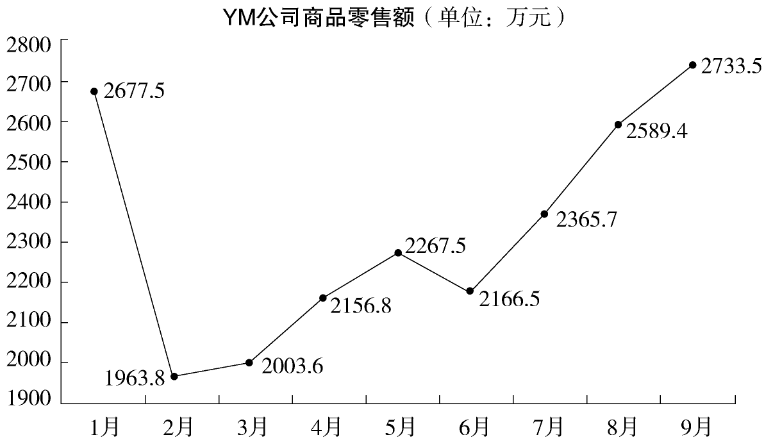
下列说法不正确的是:

下列说法不正确的是:
A.
除负增长之外,该公司商品零售额增长最为缓慢的是3月份
B.
2月份,公司商品零售额总量明显高于1月
C.
该公司商品零售额在2月份大幅下降
D.
该公司8月份的商品零售额增速高于7月份
第 103 题
单选题
根据下表回答问题:
国际货币基金组织预测世界经济走势(经济增长率%)

发展最为缓慢的国家或组织是:
国际货币基金组织预测世界经济走势(经济增长率%)

发展最为缓慢的国家或组织是:
A.
美国
B.
欧元区
C.
日本
D.
俄罗斯
第 104 题
单选题
受经济发展趋势的影响,股市也会随之发生变动。某证券公司在某年四个季度的交易数、交易额和客户类型反映了这一变化。下图分别表明了四个季度的交易数和交易额。根据材料,回答下面的问题。
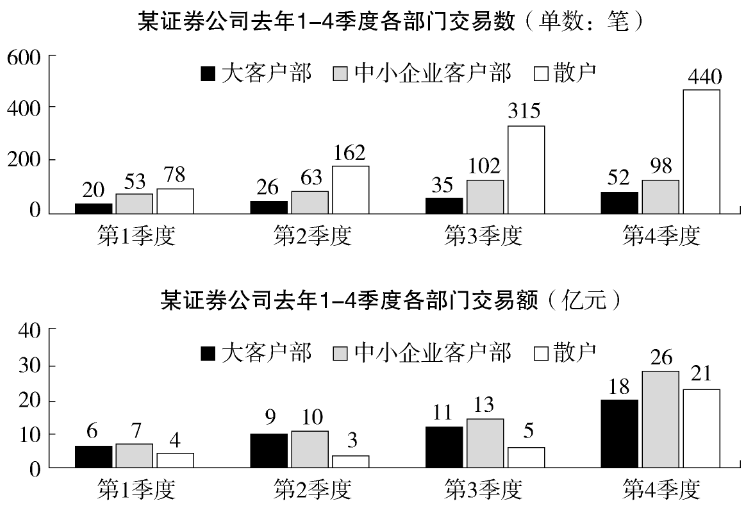
去年大客户部的单笔平均交易额为:

去年大客户部的单笔平均交易额为:
A.
0.27亿
B.
0.33亿
C.
0.39亿
D.
0.45亿
第 105 题
单选题
根据下表,回答问题:
 价格下调幅度最大的商品为:
价格下调幅度最大的商品为:
 价格下调幅度最大的商品为:
价格下调幅度最大的商品为:
A.
我们的中国
B.
Matlab教程
C.
数学之美
D.
道德经
第 106 题
单选题
GDP通常用来反映经济发展取得的成绩。第三季度,我国经济发展取得的成绩,如下列图表所示。请根据相关信息,回答问题。
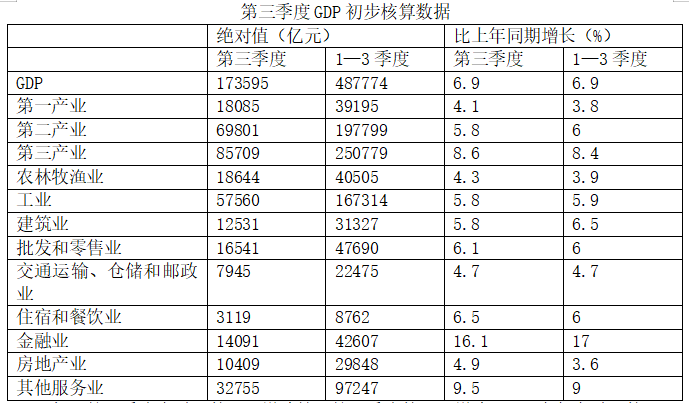
如果第四季度金融业的环比增速等于第三季度的同比增速,那么全年金融业的GDP将达到约( )亿元。

如果第四季度金融业的环比增速等于第三季度的同比增速,那么全年金融业的GDP将达到约( )亿元。
A.
240956
B.
58967
C.
27023
D.
65293
第 107 题
单选题
美国人每天在手机和数字设备花费的时间如下图所示,请根据图中信息,回答问题。
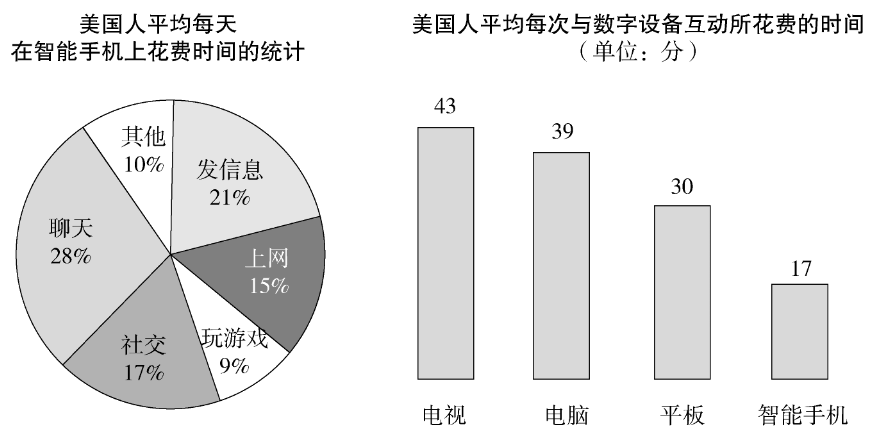
美国人每天在哪种数字设备上花费时间最长:

美国人每天在哪种数字设备上花费时间最长:
A.
电视
B.
电脑
C.
手机
D.
无法判定
第 108 题
单选题
AS公司是一家汽车生产公司,汽车销往国内和国外。下表是AS的某年的汽车销售情况,请根据表中信息回答问题。
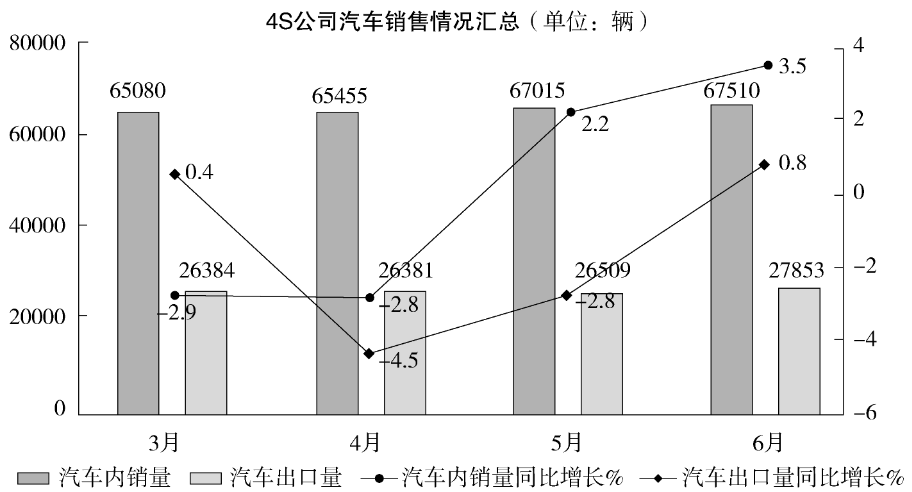
6月份,汽车内销量环比增长约:

6月份,汽车内销量环比增长约:
A.
1.0%
B.
0.9%
C.
0.8%
D.
0.7%
第 109 题
单选题
根据下表回答问题。

该公司销售额增幅最小的年份是:

该公司销售额增幅最小的年份是:
A.
第二年
B.
第三年
C.
第四年
D.
第五年
第 110 题
单选题
下表是TT公司某年的销售报表,公司共有销售一部、二部和三部三个销售团队。请根据下表回答问题。
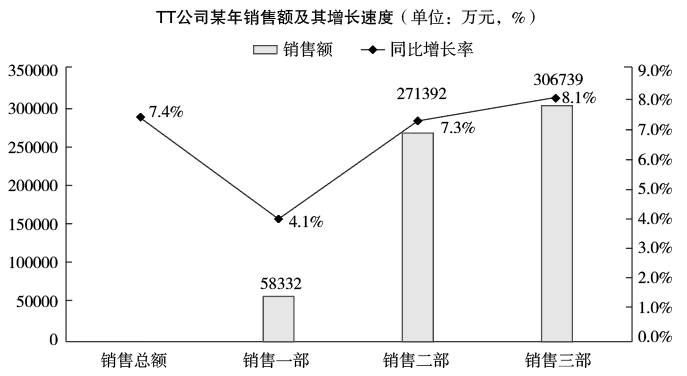
销售一部销售额占总销售额的比重为:

销售一部销售额占总销售额的比重为:
A.
4.1%
B.
9.2%
C.
13.3%
D.
8.6%
第 111 题
单选题
根据图表,回答下列问题。

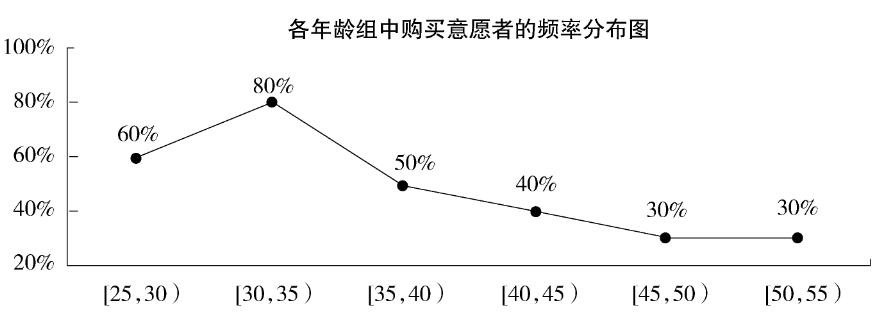
据图表显示,接受调查的对象按年龄被分为几个组?


据图表显示,接受调查的对象按年龄被分为几个组?
A.
4组
B.
5组
C.
6组
D.
7组
第 112 题
单选题

A.
A
B.
B
C.
C
D.
D
第 113 题
单选题
问号处的图形应该是:
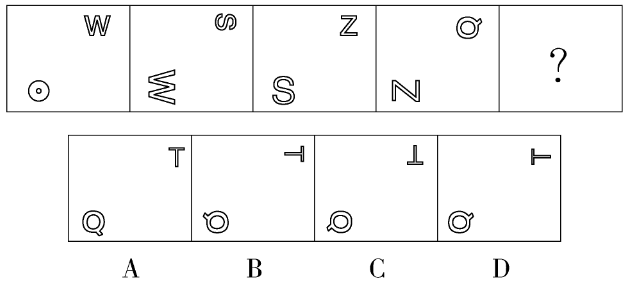

A.
A
B.
B
C.
C
D.
D
第 114 题
单选题

下面的四个图形中哪个最像上面的图形?

A.
A
B.
B
C.
C
D.
D
第 115 题
单选题
问号处的图形应该是:


A.
A
B.
B
C.
C
D.
D
第 116 题
单选题
问号处的图形应该是:
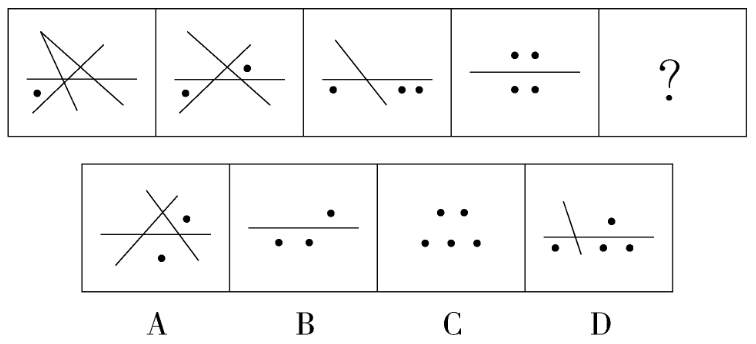

A.
A
B.
B
C.
C
D.
D
第 117 题
单选题

下面四个方格标记为A1到B2,它们合并了左侧1-2方格和上面A-B方格中所有的线条和符号,例如B1应合并在1和B方格中出现的所有线条和符号,但其中一个方格中的图形是不正确的,这个图形是?
A.
A1
B.
A2
C.
B1
D.
B2
第 118 题
单选题
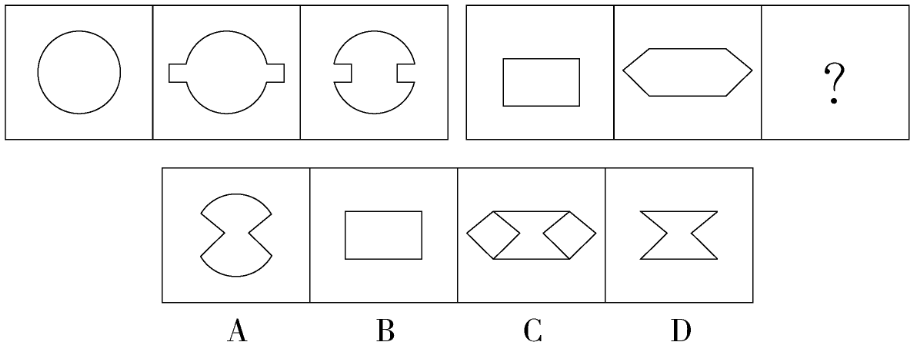
A.
A
B.
B
C.
C
D.
D
第 119 题
单选题
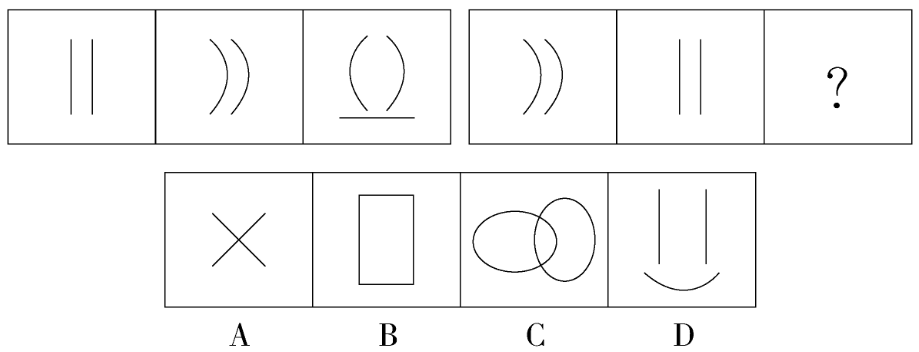
A.
A
B.
B
C.
C
D.
D
第 120 题
单选题

A.
A
B.
B
C.
C
D.
D
第 121 题
单选题
下列图形中,不同于其他图形的一项是:


A.
A
B.
B
C.
C
D.
D
第 122 题
单选题
下列图形中,不同于其他图形的一项是:


A.
A
B.
B
C.
C
D.
D